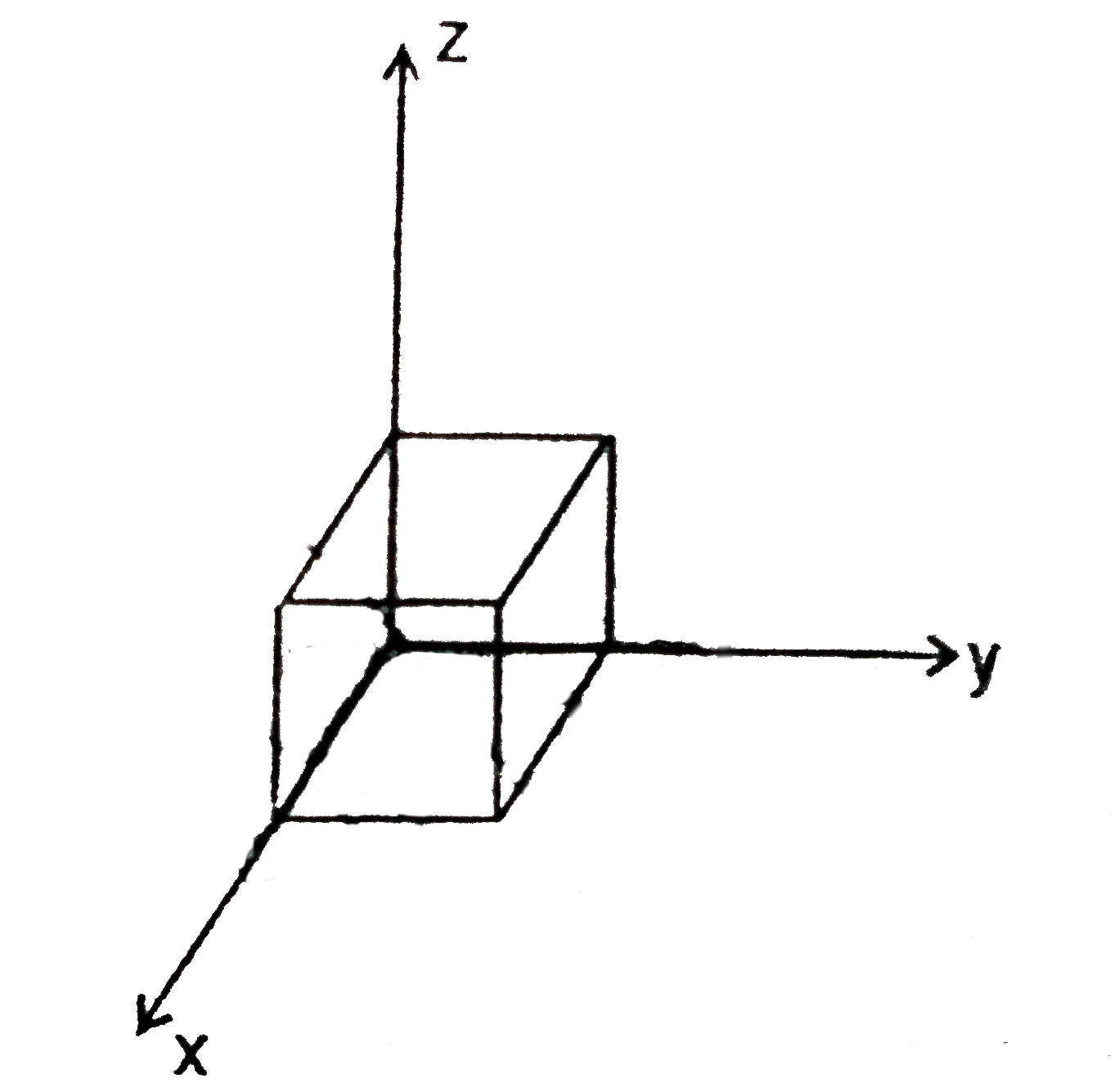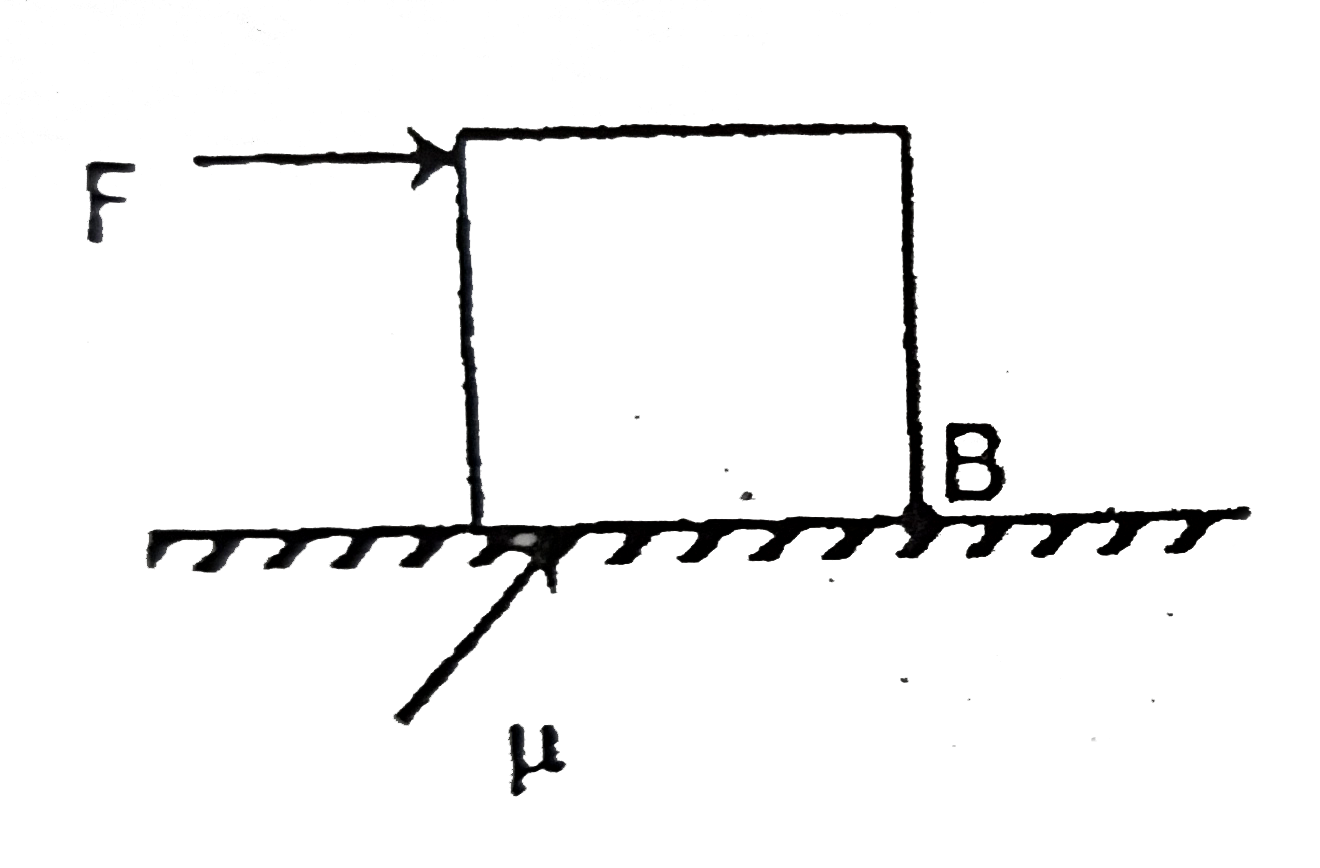A solid cube is placed on rough horizontal surface. The coefficient of friction between them is μ, where μ=<1/2. A variable horizontal force is applied on the cub's upper face perpendicular to one edge and passing through mid point of that edge. The maximum acceleration with which it can move without toppling is [Acceleration due to gravity 'g'l
μg
2μg
g[1−2μ]
[12−μ]g
The correct Answer is:C
Step by step video solution for A solid cube is placed on rough horizontal surface. The coefficient of friction between them is mu, where mu = lt 1//2. A variable horizontal force is applied on the cub's upper face perpendicular to one edge and passing through mid point of that edge. The maximum acceleration with which it can move without toppling is [Acceleration due to gravity 'g'l by Physics experts to help you in doubts & scoring excellent marks in Class 11 exams.
Updated on:21/07/2023Similar Questions
A solid cube is placed on a horizontal surface. The coefficient of friction between them is μ=0.25. A variable horizontal force is applied on the cube’s upper face, perpendicular to one edge and passing through the mid-point of edge, as shown in figure. The maximum acceleration with which it can move without toppling is (take g=10m/s2 )

View SolutionA solid cube is placed on a horizontal surface. The coefficient of friction between them is μ=0.25. A variable horizontal force is applied on the cube’s upper face, perpendicular to one edge and passing through the mid-point of edge, as shown in figure. The maximum acceleration with which it can move without toppling is (take g=10m/s2 )

View Solution
Knowledge Check
A block of mass 10kg is placed on a rough horizontal surface having coefficient of friction μ=0.5 . If a horizontal force of 100N is acting on it, then acceleration of the block will be.
A10ms−2B5ms−2C15ms−2D0.5ms−2
A block of mass 10kg is placed on a rough horizontal surface having coefficient of friction μ=0.5 . If a horizontal force of 100N is acting on it, then acceleration of the will be.
View SolutionA block of mass 10kg is placed on a rough horizontal surface having coefficient of friction μ=0.5 . If a horizontal force of 100N is acting on it, then acceleration of the will be.
View SolutionA block of mass 10kg is placed on a rough horizontal surface having coefficient of friction μ=0.5 . If a horizontal force of 100N is acting on it, then acceleration of the block will be.
View SolutionA thin uniform spherical shell of mass m=2kg and radius R=10cm is placed on a rough horizontal surface with a coefficient of friction μ=0.4. A horizontal force 'F' is applied to the spherical shell at a height R/3 ablove the centre as shown. The maximum magnitude of the applied force 'F' for which the spherical shell will be rolling without slipping is (taking g=10m/a2 )

View SolutionA solid cube of mass 2kg is placed on rough horizontal surface, in xy−plane as shown. The friction coefficient between the surface and the cube is 0.2. An external force 3ˆi+4ˆj+5ˆkN is applied on the cube. (use g=10m/s2)

View SolutionA 3 kg block is placed over a 10 kg block and both are palced on a smooth horizontal surface. The coefficient of friction between the block is 0.2 . If a horizontal force of 20 N is applied to 3 kg block, accelerations of the two block in ms−2 are (take, g=ms−2)

View SolutionA cubical box of side length L rests on a rough horizontal surface having coefficient of friction μ. A variable horizontal force F=αt is applied on the top of the block as shown in figure, where α is a constant and t is time. The coefficient of friction is sufficient so that the block does not slide before toppling. The graph between torque due to normal reaction about end B and time before toppling start is

View Solution
